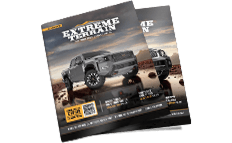Nissan Titan Headlights
Understanding the intricacies of Nissan Titan Headlights reveals a world of intense engineering precision, quality standards, and performance characteristics. These headlights, key components in any automobile, are multifaceted entities with numerous characteristics professional mechanics and auto enthusiasts would do well to comprehend.
Composition and Manufacturing of Nissan Titan Headlights
Automotive headlights are typically composed of the bulb, reflector, lens, and housing. Each material is meticulously chosen, with the objective of optimal light output and durability. For instance, halogen bulbs, commonly used in Nissan Titan headlight assemblies, encompass a tungsten filament housed in a quartz envelope filled with halogen gas – a design that contributes to brightness, longevity, and cost-effectiveness. From the manufacturing perspective, Nissan Titan headlights undergo a systematic process. The bulb and reflector are first assembled into precise alignment, followed by the toughened, clear, polycarbonate lens joining them, ensuring impactful light distribution. The overall structure is sheathed in a robust plastic housing, capable of weathering harsh conditions while preventing unwanted light scatter.Compatibility and Performance Factors
It’s critical to consider compatibility. While most Nissan Titans use H11, 9005, or H9 bulbs, it can vary based on the model's year and specific trim level, highlighting the importance of confirming your vehicle's particular needs. The performance of Nissan Titan headlights is a significant factor. Efficient headlights not only illuminate the path but also ensure the visibility of your vehicle to others. Worth mentioning is the growing popularity of LED and HID bulbs, which although more expensive than halogen, provide exceptional light output and longevity. However, the performance of the headlights, like other automotive parts, is also contingent on various conditions, such as the age and mileage of the vehicle and its maintenance history. Older vehicles might need heightened attention due to possible degradation of the headlight plastics, which can diminish light output. Regular maintenance is also imperative, as headlights could require periodic adjustment to ensure the correct aiming of the beams.Aftermarket Modifications and Quality Standards
In the realm of aftermarket modifications, it's common to see enthusiasts pairing headlight upgrades with related enhancements like fog lights or upgrades to tail lights and interior lighting. This coordinated approach can not only boost aesthetics but also improve overall visibility and safety. Quality standards in the manufacture of Nissan Titan Headlights are stringent. To meet the exacting demands of both safety and performance, these components are usually designed and tested to the rigorous stipulations of the US Department of Transportation (DOT) or the Economic Commission for Europe (ECE). These regulate aspects such as light output and dispersion, bulb type, and headlight alignment, ensuring the product's safe and efficient operation. Investing time to understand your vehicle's lighting system aids in optimizing the vehicle's performance, efficiency, and safety, while gaining a satisfactory grasp of Nissan Titan headlights offers an illuminating insight into the world of automotive parts and components.Fitment Includes:
- 2004, 2005, 2006, 2007, 2008, 2009, 2010, 2011, 2012, 2013, 2014, 2015, 2017, 2018, 2019, 2020, 2021, 2022, 2023 and 2024 Nissan Titan
- LE, SE, XE, PRO-4X, S, SL, SV, Platinum Reserve
*Please see product pages for any exceptions.




























